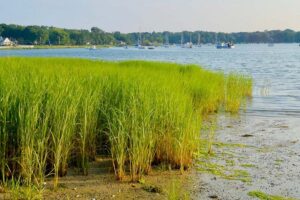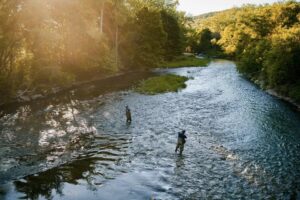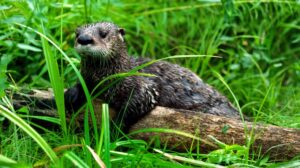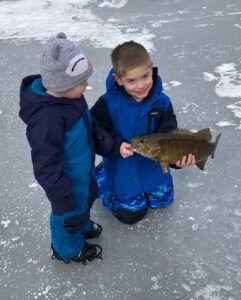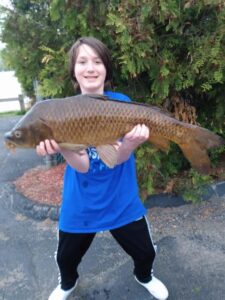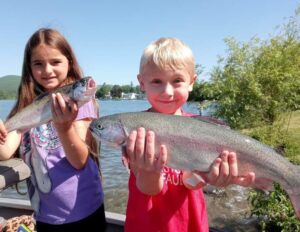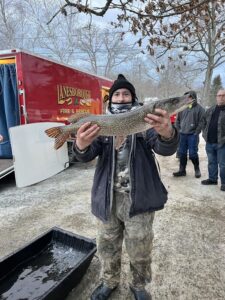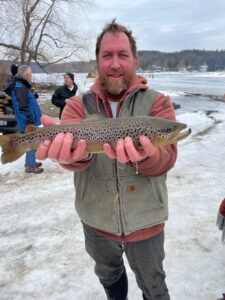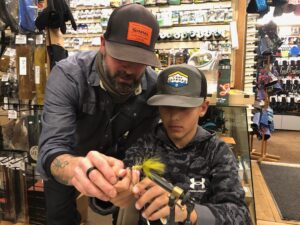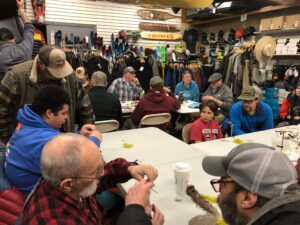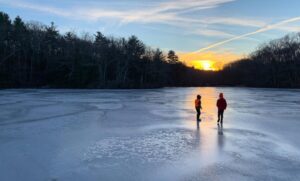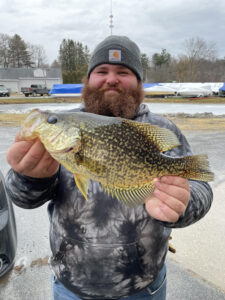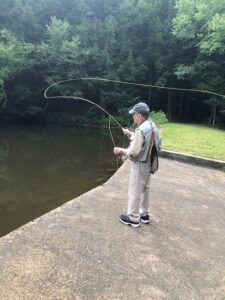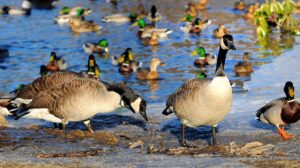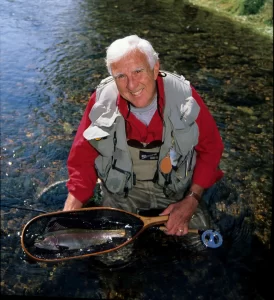For years local fishermen and environmentalists have been troubled by the annual Pontoosuc Lake drawdowns and herbicide applications even though such steps do not always appear to be necessary. While some herbicides may be necessary to prevent the takeover of the lake by invasive aquatic vegetation such as Eurasian Milfoil, is it necessary every year? They feel that the drawing down of the lake and the application of herbicide represent a “double whammy” on the fish, invertebrates, turtles, etc.
They feel the drawdowns, greatly affect the nearby coves and wetlands with animals such as muskrats, beavers, etc. Also, freshwater mussels being exposed to the winter elements are dying perhaps by the thousands. (They are important critters that filter out impurities in our waters). Beavers are suddenly exposed to freezing waters after they have already made their lodges and stored their food for the winter.
Their concerns have been brought to MassWildlife because it is the agency charged with the statutory responsibility for the conservation of freshwater fish and wildlife including endangered plants and animals. In meetings with the Conservation Commissions, MassWildlife has expressed opposition to the drawdowns, but they go ahead and permit them anyway. The authority to allow the drawdowns rests with them and DEP and not MassWildlife.
Fishermen, especially Dan Miraglia of Pittsfield, have approached the Berkshire County League of Sportsmen (BCLS) year after year, but it also is powerless to stop them. This year; however, the delegates, led by League President Wayne McLain, unanimously voted to send a letter to the MA Environmental Policy Act Office (MEPA) expressing their concerns about the new proposed drawdown as well as the use of herbicides.
MassWildlife also submitted comments to the Secretary of the Executive Office of Environmental and Energy Affairs (OEEA) and MEPA regarding the proposed drawdown. What both parties requested is to properly follow the procedures set by the state with solid plans and metrics so that the resource is properly protected. Such an approach supports all citizens’ interest and ensures things proceed in a balanced way without preferential treatment or influence.
Parts of MassWildlife’s comments are included in this column. Space only allows me to cover one of its concerns which is very important to area sportsmen – impacts of the drawdown
In its letter MassWildlife expressed four concerns:
Drawdown Project.
“MassWildlife’s position on the proposed drawdown is that it alters and causes harm to biological resources without substantive justification or full consideration of alternative approaches with less impact to the biological resources. Specifically, MassWildlife identifies the following concerns:
o Project Segmentation (should be considered in totality)
o Inconsistencies between the Expanded Environmental Notification Form (EENF) Pontoosuc Lake Annual Drawdown Project, and previous filings for lake management in Pontoosuc Lake
o Incomplete/Insufficient alternatives analysis
o Proponent’s assertion that the ecology of the lake is unimpacted by the drawdown”
Importance of Pontoosuc Lake
“Pontoosuc Lake is a recreationally and ecologically important and valuable resource. Ensuring
access to high-quality outdoor recreational opportunities is especially important in Pittsfield, as
it is designated as a community in Massachusetts with Environmental Justice populations.
The lake’s proximity to Pittsfield and the public access boat ramp makes Pontoosuc a
destination lake for anglers and other recreational users. MassWildlife’s Angler Education
Program has hosted Learn-to-Fish clinics at Lake Pontoosuc to introduce people to fishing and
connect the local community to nature.
The lake is annually stocked with trout by MassWildlife to provide additional recreational
opportunity for anglers. In addition to trout fishing, they target Largemouth
Bass, Smallmouth Bass, Yellow Perch, Chain Pickerel, and Northern Pike. The naturally
reproducing Pike fishery in Pontoosuc is particularly sought after. The lake and its supporting
wetlands are also important habitat for waterfowl, semi-aquatic mammals, reptiles,
amphibians, and invertebrates.”
Impacts to Fish and Wildlife
“The impacts to wildlife resources from drawdowns have the potential to be extensive, both in-lake and downstream. The dewatering of littoral zones may be temporary, but the impacts of a drawdown are long lasting. Shallow water habitats in Pontoosuc Lake have been impacted for many years as a result of the long running annual drawdown. Native freshwater mussels, snails, and other invertebrates die from exposure to the dry, freezing conditions as they are unable to fully relocate (Carmignani et al. 2019). Beaver lodges and muskrat dens are exposed to freezing conditions at a time when the animals cannot relocate to thermally safe environments. Delayed refill impacts spawning activities of fish who deposit eggs within littoral habitats. MassWildlife disagrees with the presumption of the Proponents that the ecology of the reservoir has somehow adapted to the consequences of drawdown over the many years that it has been implemented. Rather, it is equally, if not more likely, that the ecology has in-part succumbed to the cumulative impacts of annual drawdown.
The EENF states that recent/ongoing research has not documented significant impacts from drawdowns on lake biological assemblages. However, recent research in Massachusetts lakes has shown that the decades-long application of annual winter drawdowns significantly alters littoral habitat and associated biological assemblages within exposure zones. In MassWildlife’s opinion, the Proponents incorrectly describe the results of a study, Carmignani et al. 2019. (It) found a near absence of mussels at depths exposed to drawdown compared to the same depths (<2ft) in lakes without drawdown. Lakes without drawdowns contained significantly more mussels in shallow waters. This pattern strongly suggests depths exposed during drawdown have become low quality or no longer suitable mussel habitat.
The Proponent points out that mussels were found at higher densities in deeper water in drawdown lakes compared to non-drawdown lakes; however, the Proponents misinterpret this pattern as mussels compensating for the loss of habitat with increased abundances below the drawdown exposure zone. In fact, the study explicitly demonstrates this pattern does not hold in western Massachusetts lakes, which would apply to Pontoosuc.
The Proponents also misinterpret that small and likely colonizing mussels found within the drawdown exposure zone during the summer will persist year-round. In stranding surveys across multiple drawdown lakes, (it) found subsequent drawdowns cause stranding and mortality of these smaller mussels.
Taken together, it is MassWildlife’s assertion that annual winter drawdown in Pontoosuc negatively impacts its freshwater mussel population by reduction of suitable habitat and through annual stranding and mortality of young colonizing mussels. Consequently, the annual winter drawdowns have likely reduced the overall mussel population size in Pontoosuc, and abatement of annual winter drawdowns would enable mussel colonization into the former drawdown exposure zone providing important restoration opportunities.
The Proponent mentions at several points that drawdown impacts are temporary and abated once the pond refills. This is not supported by any documentation and the opposite can be expected. Wetlands associated with this drawdown, once frozen, are impacted for the long term. To imply that these wetlands immediately recover is counter to winter drawdown for vegetation control, which relies on more permanent impacts to negatively impact the vegetated community. The EENF does not adequately support the arguments of temporary impacts. We recommend that they address these issues in a revision to the EENF or future EIR more closely reflect the information herein, or provide other literature support for their positions.
Attachment 4 of the EENF provides output from the Resilient Massachusetts Action Team (RMAT) analysis. The Proponents identify the project as an ecological restoration in this analysis. While MassWildlife is not familiar with all the details of RMAT process, nothing in this proposal would constitute an ecological restoration project for fish and wildlife resources.”
Summary
“Pontoosuc Lake is an ecologically and recreationally important resource in proximity to a DEIJ (Environmental Justice) community. Winter drawdown of lakes and ponds in Massachusetts alters resources that MassWildlife is mandated to conserve and protect. The submitted EENF appears to be segmented from other outstanding lake and pond management activities that are currently under review; is inconsistent in intent with previous permits for the same drawdown; does not propose to operate in such a way as to minimize downstream flooding; does not adequately address alternative solutions that would benefit downstream resources; and discounts historical and long-term impacts to fish, wildlife, and wetland resources.
MassWildlife believes that the drawdown is harmful to the biological communities in Pontoosuc Lake. All alternatives should be considered and weighed against the harm to the biological communities with thorough and conclusive evidence for the stated management action.
MassWildlife respectfully requests that the Secretary require the Proponent to provide additional details to address the issues described herein. Without additional information, MassWildlife does not feel the project has adequately and completely analyzed impacts.”
Signed by Todd Richards, Assistant Director of Fisheries and Andrew Madden Western District Supervisor
We can only hope that MEPA takes MassWildlife’s recommendations seriously. After all, they are the Massachusetts ENVIRONMENTAL PROTECTION Office.

